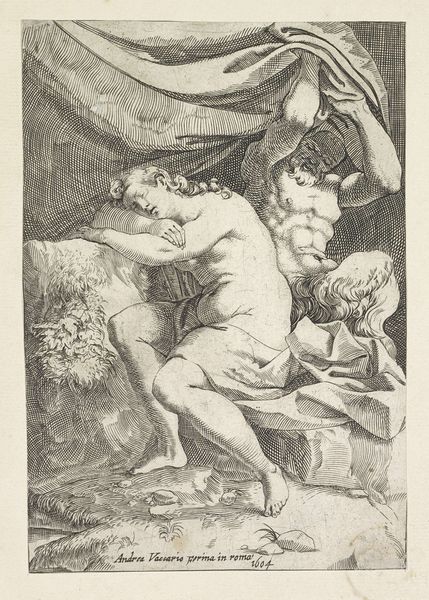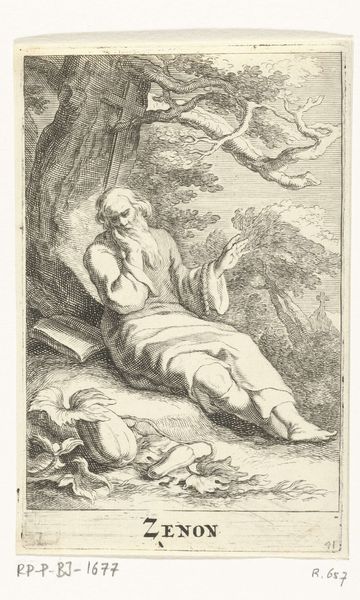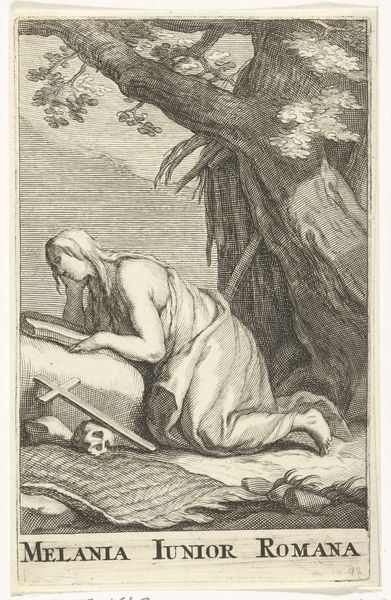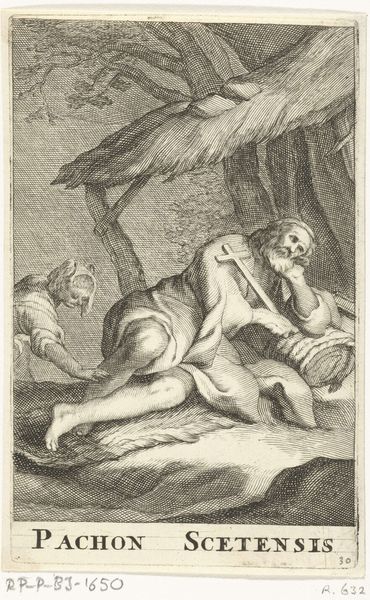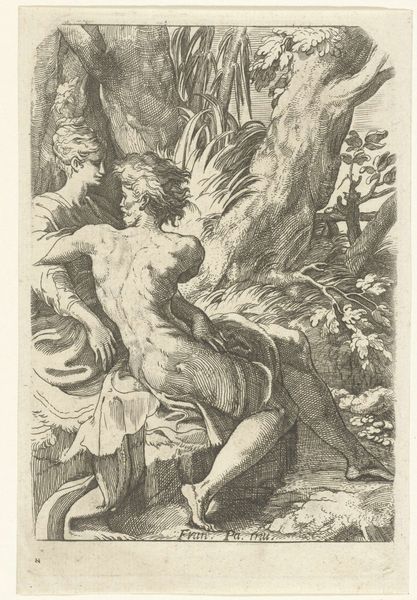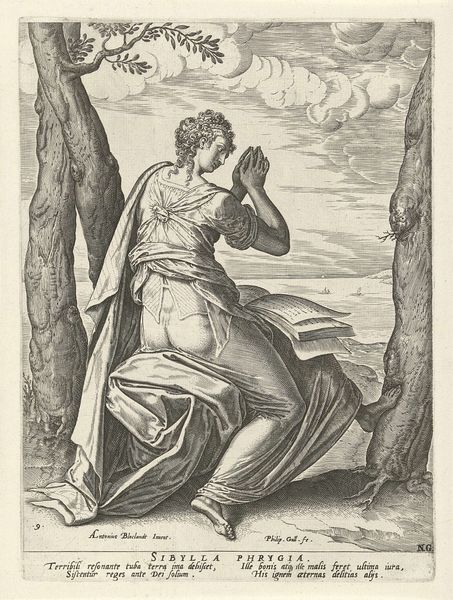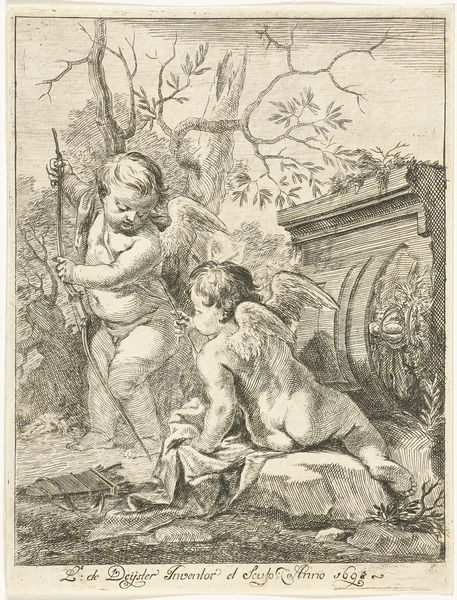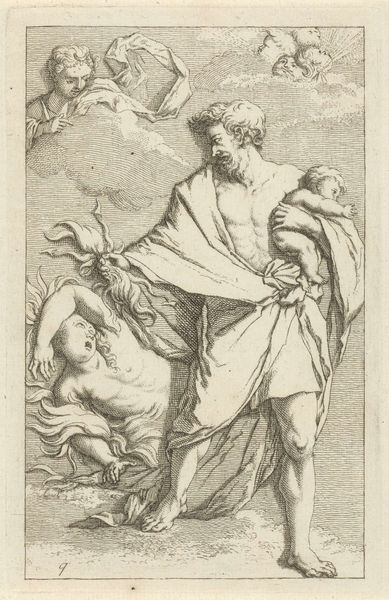
print, engraving
#
narrative-art
#
baroque
# print
#
old engraving style
#
history-painting
#
engraving
Dimensions: height 135 mm, width 85 mm
Copyright: Rijks Museum: Open Domain
Editor: Here we have Frederick Bloemaert’s engraving, “Heilige Gaddana en de Heilige Elias,” made after 1636. It depicts a rather dramatic scene. An angel, sword raised, seems to be intervening in a solemn moment of study or prayer. What do you see in this piece that stands out, historically or culturally? Curator: It’s interesting to consider this engraving within the context of the Baroque era's focus on dramatic storytelling. Religious narratives were often deployed as powerful tools of Counter-Reformation propaganda. Bloemaert's work, with its strong contrasts and active figures, aligns with that. Gaddana’s pose, absorbed in study, might represent the virtues of scholarship and piety championed by the Church, while the angel's intervention suggests divine protection of these ideals. Editor: So, this isn't just a story; it’s an argument? The angel almost seems to be silencing any potential dissenting voices. Curator: Precisely. Prints like these circulated widely. Think of them as visual sermons, reinforcing accepted doctrines within society. The accessibility of prints allowed these messages to permeate various social classes, making art a powerful tool for shaping public opinion. Have you considered how this work engages with similar images? Editor: It reminds me of other engravings where angels appear as protectors of knowledge or faith. But the figure in the cave - is that meant to signify something else entirely? Curator: Yes. In that period the inclusion of figures that were presented almost separate in a panel like the figure in the cave, was often employed to provide the public with options of reflection when the figures' beliefs don't necessarily follow the public view. Perhaps the engraver meant to inspire reflection on whether religious views were to be fully imposed, by the angle in our panel, or one must find themselves, in that symbolic cave? Editor: That makes a lot of sense! It's fascinating how seemingly straightforward religious art could contain layers of socio-political commentary. Thanks for helping me understand the piece much better. Curator: My pleasure! These works offer a glimpse into how art served as a medium for navigating complex religious and political landscapes of the time.
Comments
No comments
Be the first to comment and join the conversation on the ultimate creative platform.
